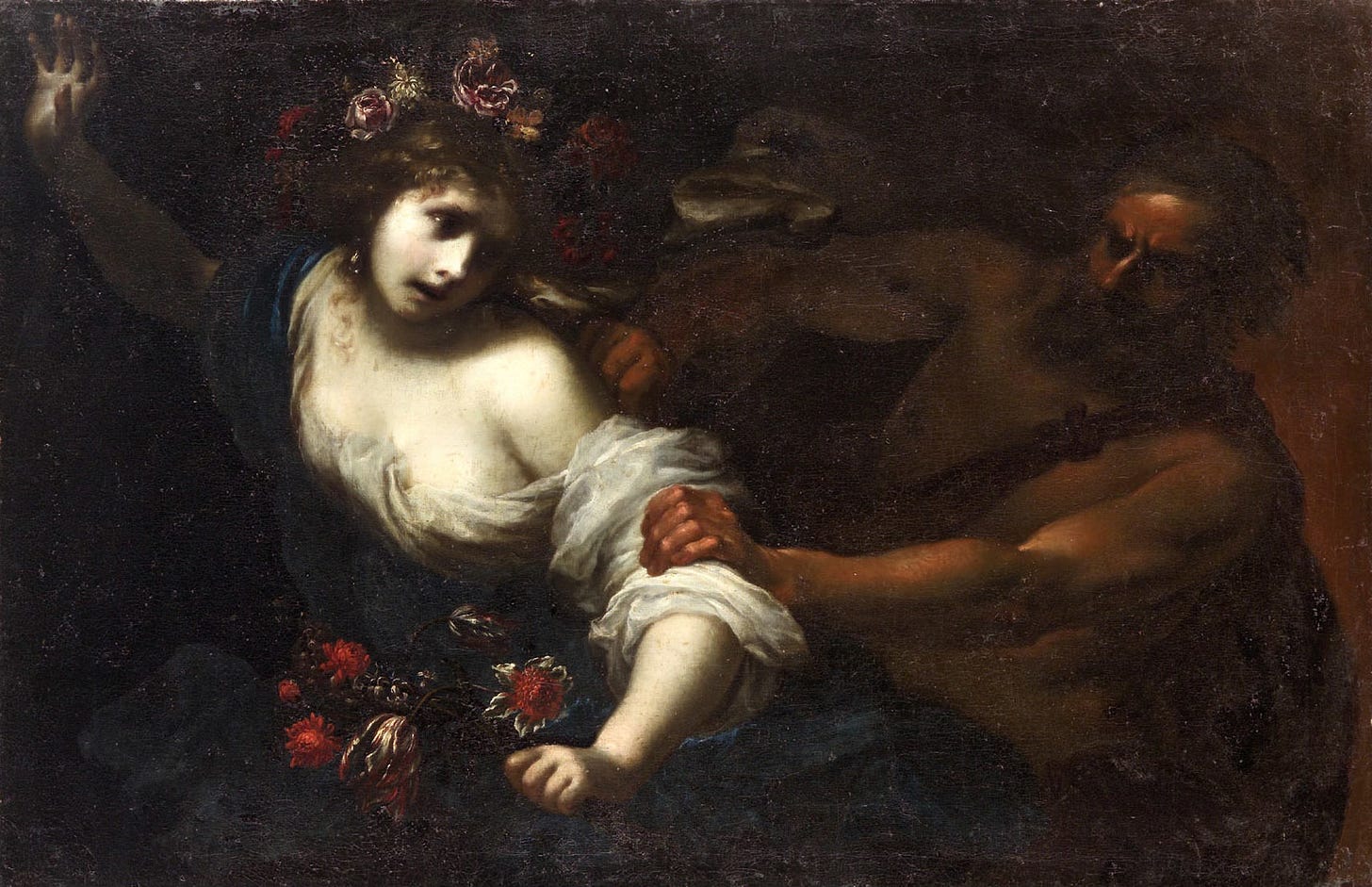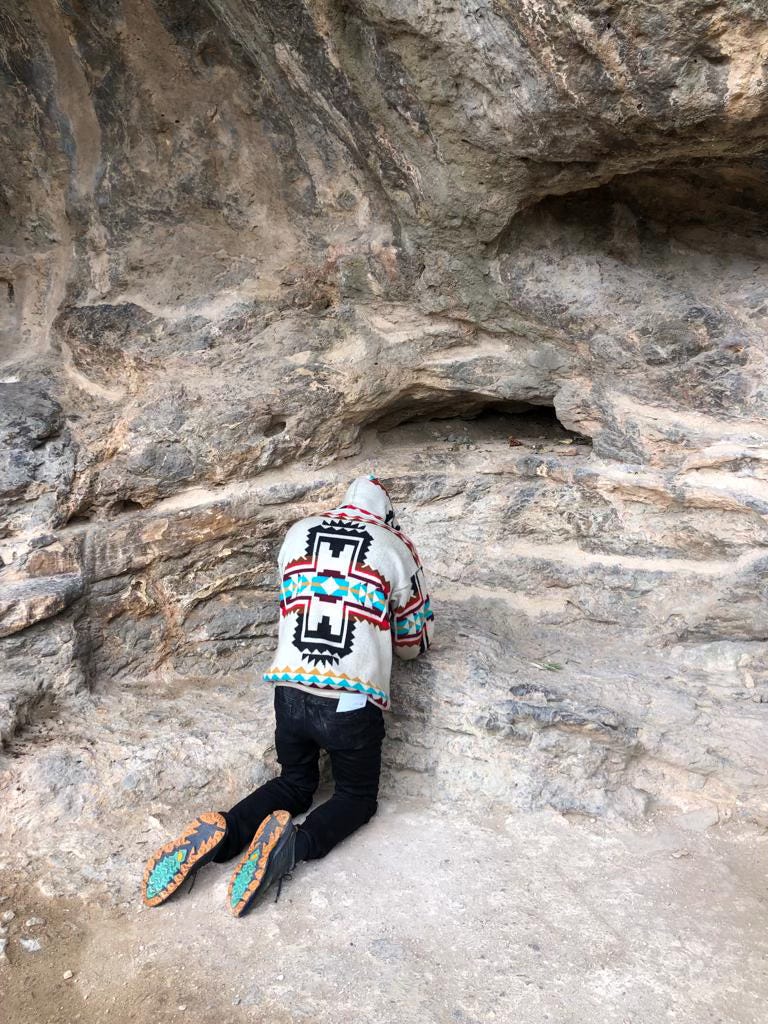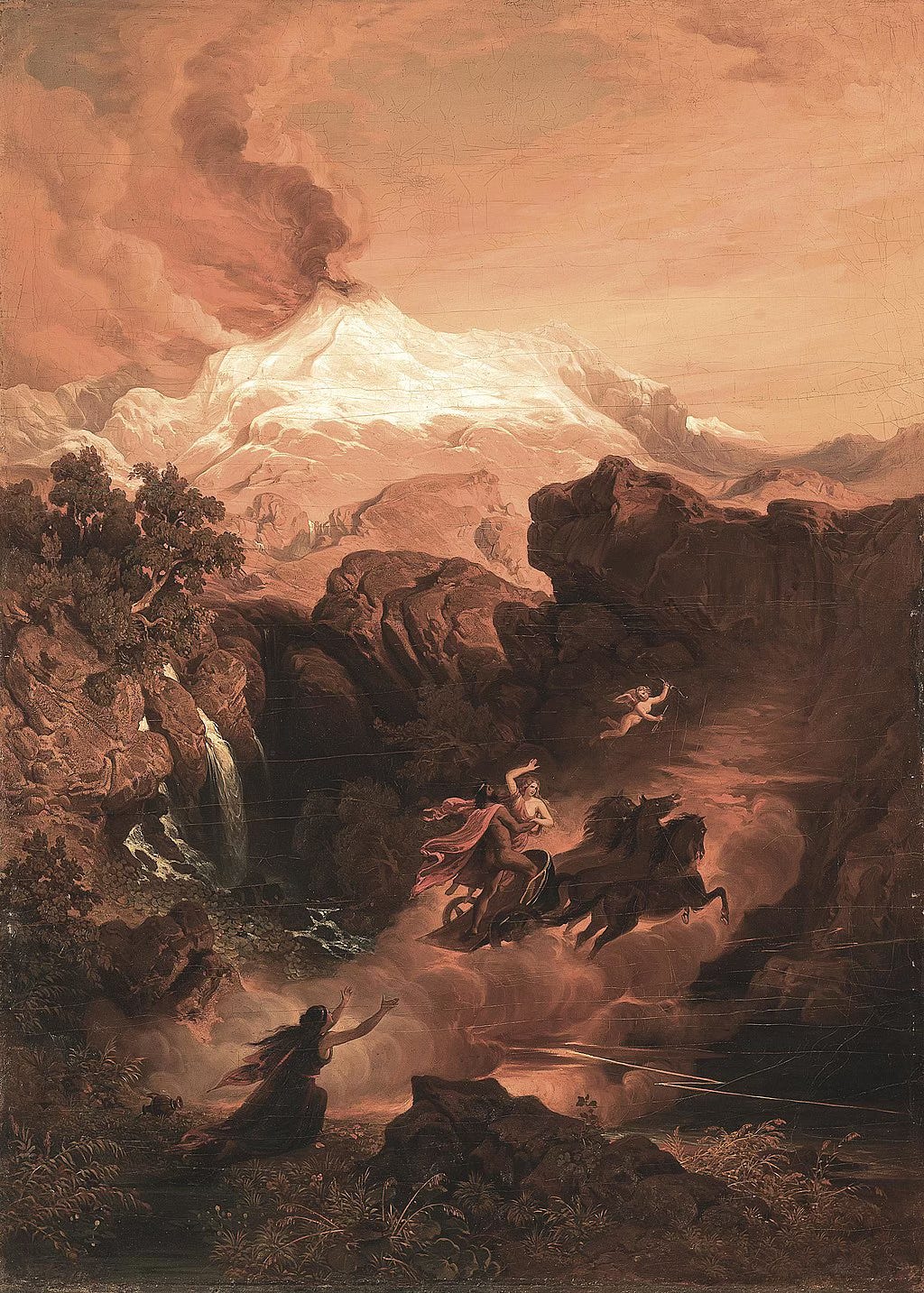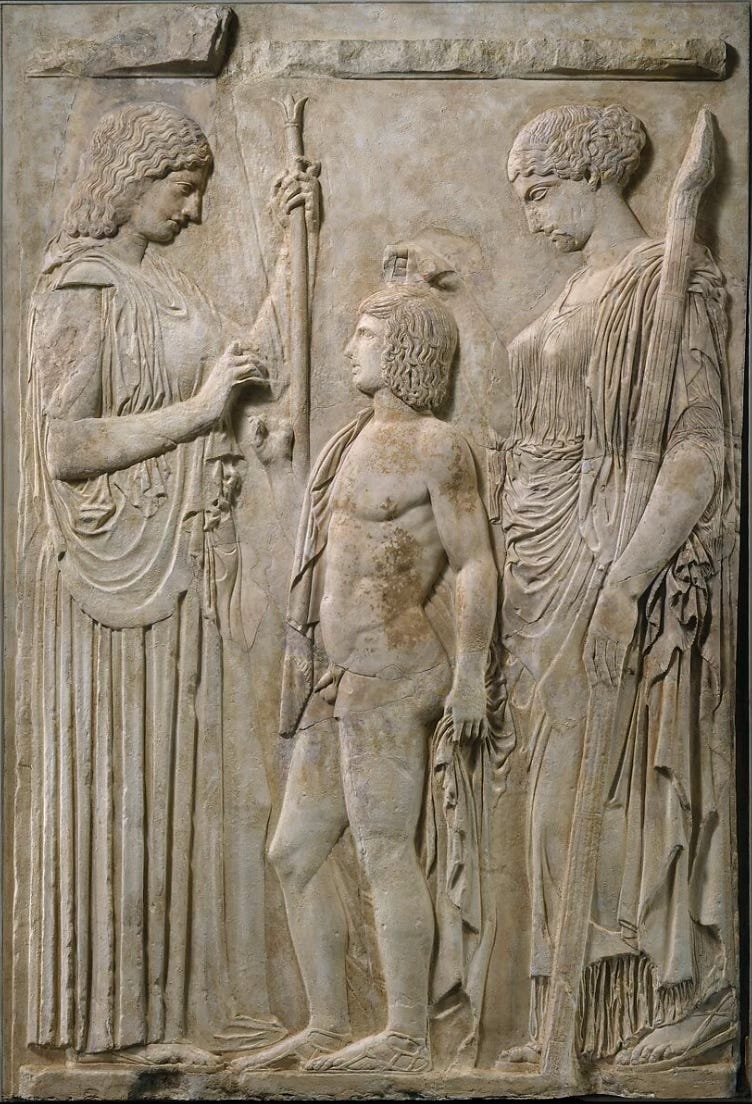"The Myth of Persephone and Demeter": Live Storytelling
An Ancient Mediterranean Tale of the Underworld, Grief, Initiation, Loss, and Land.
Please listen to the recording of the live story first.

You can hear the crackling of fire in this telling, both the flames of Hades and the communal fire feeding on the limbs of Juniper and Ponderosa, warming us amidst a fair Fall leaning into Winter’s embrace. This ancient story of Persephone and Demeter, this old myth of the Mediterranean world and beyond, chose me as Her vessel this night.
At this birth of The Honey Cave Substack, I’ll let y’all know that I am an apprentice to oral storytelling–to channeling the divine intelligences that I believe move through us and are the stories. Thus, I do not “rehearse” much, and sometimes not at all. I post-edit only the essentials, particularly if there are instrumentals. This invites more “mistakes” and failed accuracies in my tellings, which I will attempt to address post-story, yet it also allows the mysterious to emerge unbidden from their hidden dens. Just like animals, myths must adapt to their environments to survive, and that was well-understood by ancient nature-based cultures until monotheistic orthodoxies began preaching “absolute truths” that slowly skewed our modern consciousness.
Since my modest pilgrimage to Greece (which I wrote more about in the “Thieves of the Honey Cave”) to make offerings and reforge my ancestral link to that land, some Greek stories have lured me into sniffing for some forest-fragrant fur beneath the well-washed linens of their classical clothes. Persephone and Demeter’s story is one of these. I had never told this story before, but could sense Her in the group field gathered to honor ancestors around the fire with communal song, poetry, and story; a space primarily kindled and tended by poet Geneva Toland and eco-somatic siren Alisa “Bubs” Buselli, and to a lesser extent, myself.


I was there at Eleusis, touched the crack where they say Hades emerged and pulled Persephone down to make her his bride, marveled at the dried pomegranate seeds still left there as offerings by locals, walked amongst the temple ruins where one of the most important mystery rites of the ancient Greek and Mediterranean worlds was hosted. As moderns, we think of myths as just old stories we sometimes make into movies for entertainment, but in the history of all peoples, myths were vital to life. This was certainly the case in Ancient Greece, where this myth played a central role in the Eleusinian Mysteries, arguably the most important spiritual initiatory experience for those peoples that endured at least a thousand years.
“. . . and as the rites are called ‘initiations,’ so in very truth we have learned from them the beginnings of life, and have gained the power not only to live happily, but also to die with a better hope. “

The version I tell is sourced primarily from the Homeric Hymn to Demeter, translated by Gregory Nagy. Having never told this story before, I did my best to stay faithful to the main pillars of this foundational hymn while allowing Her spontaneity to move me. I also weave in some “knowledge” around my shallow studies of the Eleusinian Mysteries from a variety of sources, such as THE ROAD TO ELEUSIS: Unveiling the Secret of the Mysteries by Wasson, Hofman, and Ruck.
Post-Oral Telling Corrections: I speak of the red flower that lures Persephone as being the Narcissus flower. The Homeric Hymn to Demeter states it as so, but not that it is red, as do other tellings and imagery. The Narcissus flower is (at least to my knowledge) either white or yellow. Perhaps there was an ancient red flower referred to as Narcissus, or the strong symbolism associated with red flowers in myth–passion, virginity, loss of innocence, etc–have made mine and modern minds turn the petals red.
With Deep Gratitude to Greece, The Story Tenders, and You,
Deer Ryder



